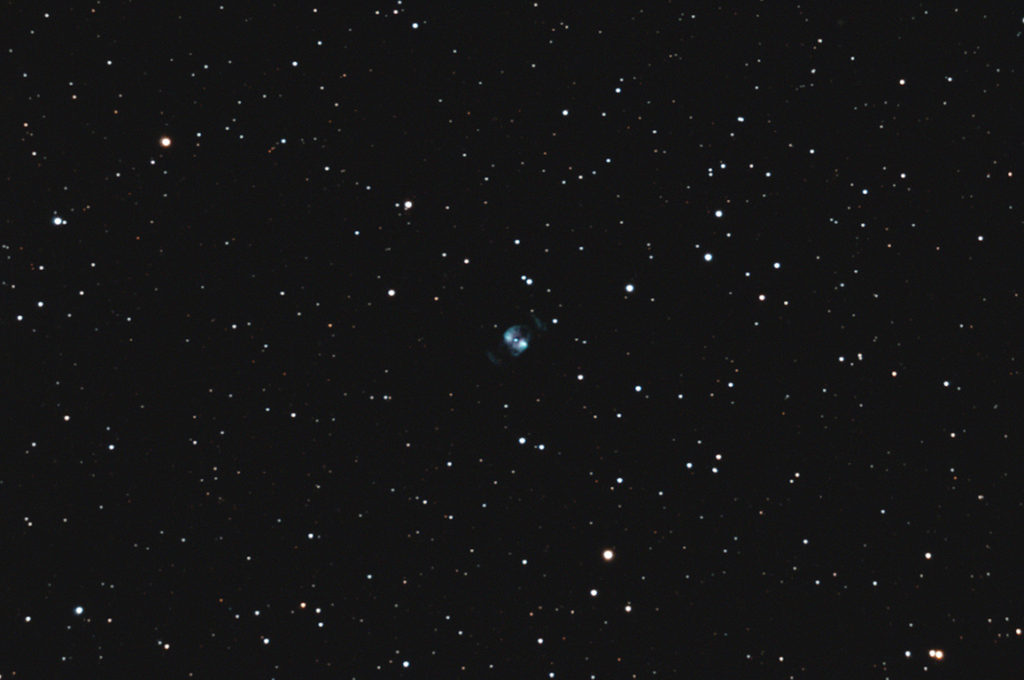
Telescope: Meade 12” LX850 ACF @ f/8, Orion Atlas EQ-G
Camera: ZWO ASI071 MC Pro, -10C, Gain 200
Filter: Orion Imaging Skyglow Filter
Guide scope: Astro-Tech 60mm, ASI290MM Mini, PHD2
Exposure: 22x240sec, saved as FITS
Darks: 32x240s, saved as FITS
Flats: 32x1sec, Tee shirt flats taken at dawn
Average Light Pollution: Red zone, Bortle 8, fair transparency
Lensed Sky Quality Meter: 18.6 mag/arc-sec^2
Stacking: Mean with a 2-sigma clip.
White Balance: Nebulosity Automatic
Software: Nebulosity, Deep Sky Stacker, Photoshop
NGC 2371/2 is a fascinating little planetary nebula in northern Gemini placed midway between Castor and Pollux. When this nebula was discovered it was thought that it was actually two separate objects, hence the two New General Catalog (NGC) numbers. The core nebula shows two clearly resolved lobes with two faint outer arcs. The seeing was pretty rough when this image set was taken so I down-sampled it a bit to keep it from looking too soft. I’ll be taking another look at this nebula on an evening with better seeing.
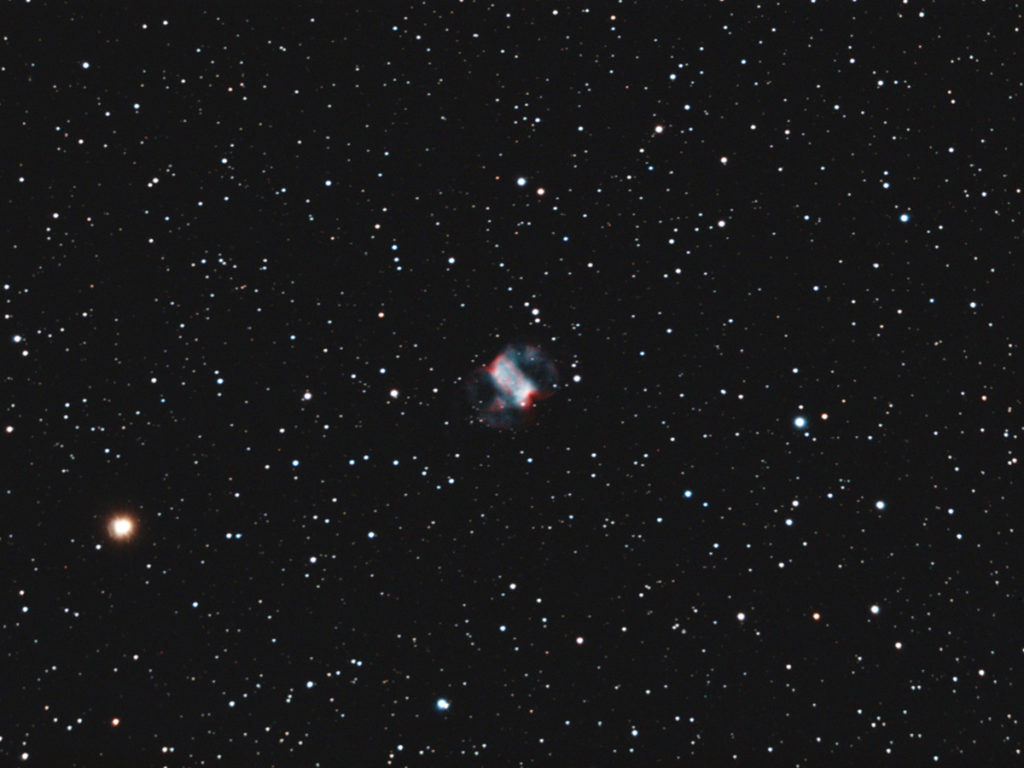
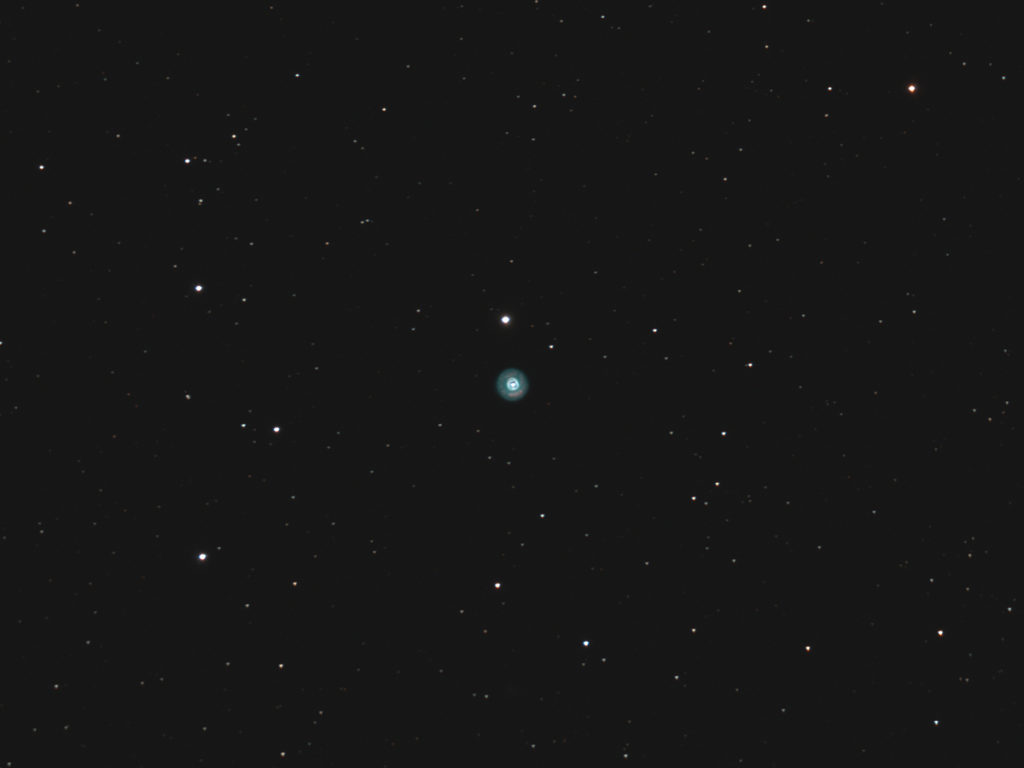
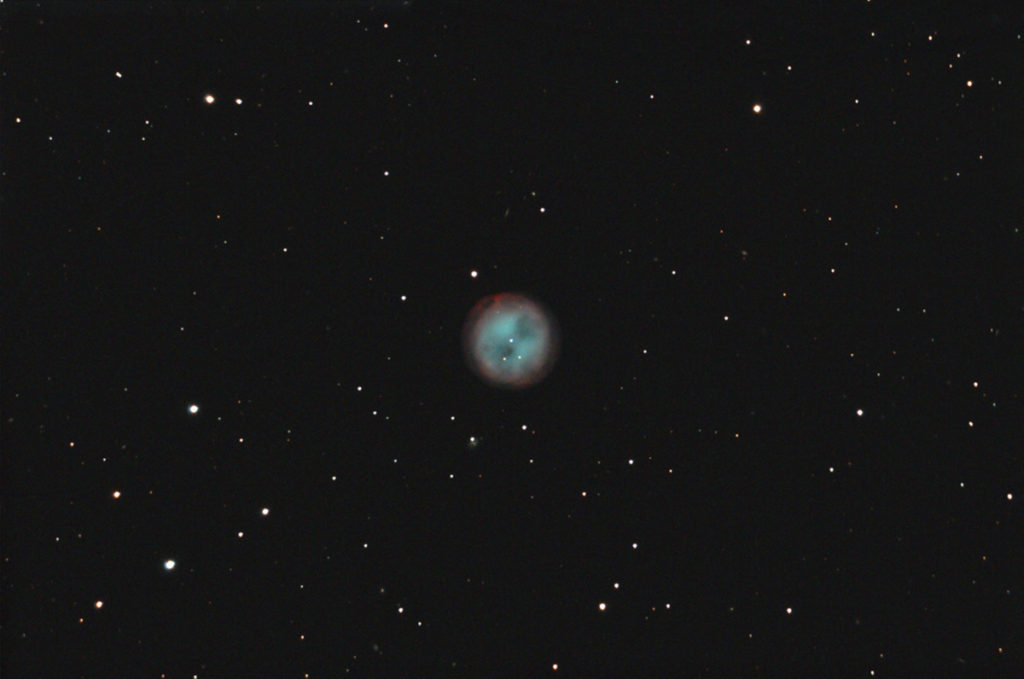
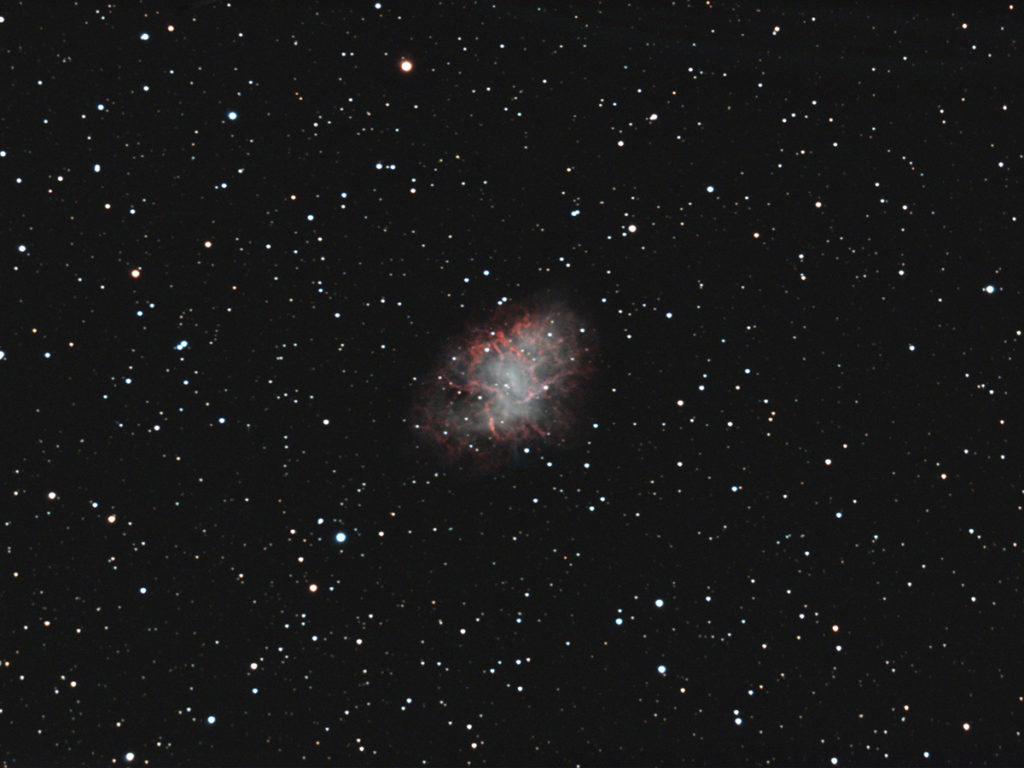
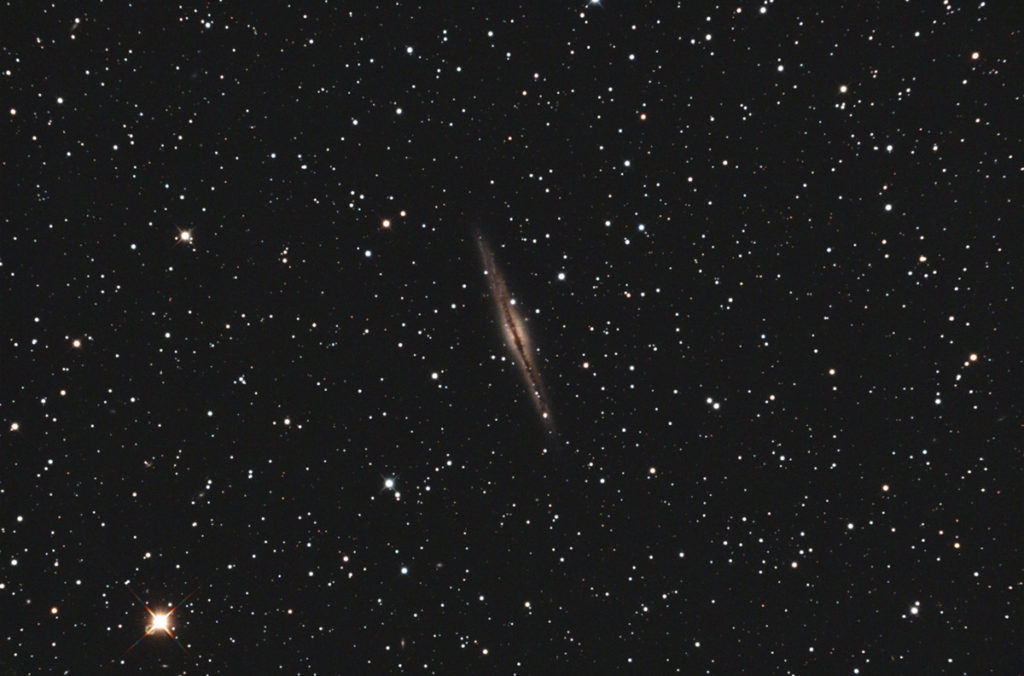
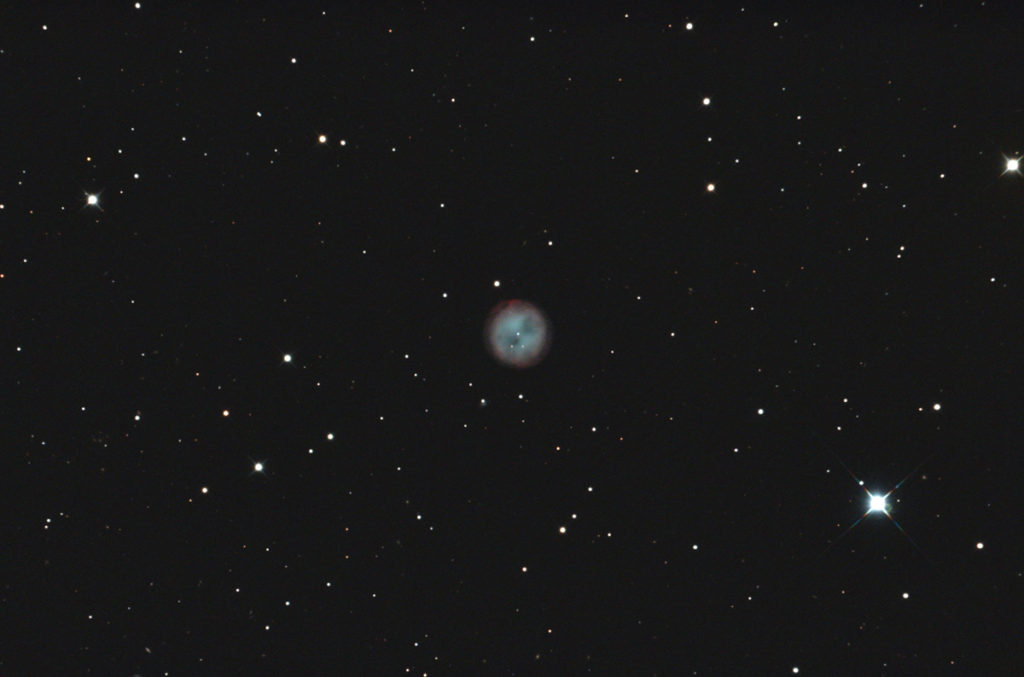
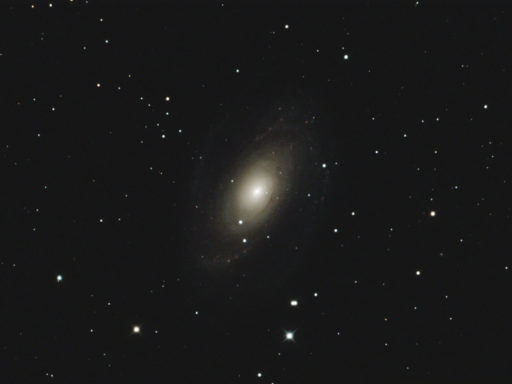

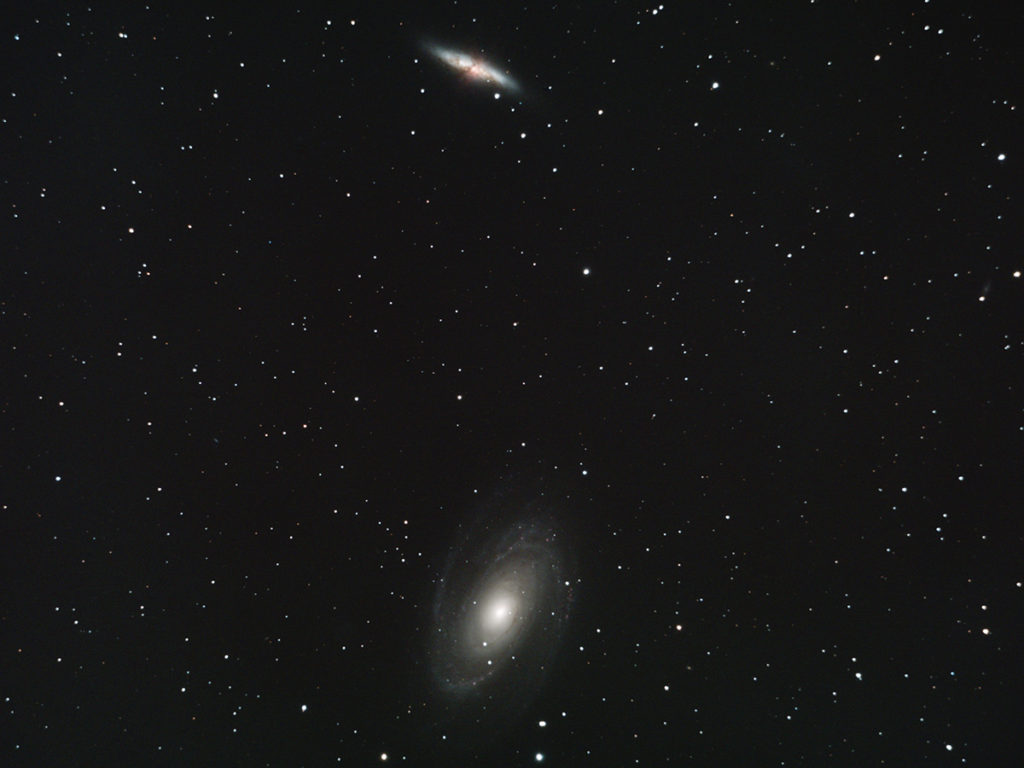
Recent Comments